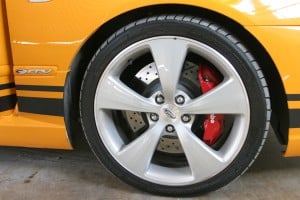
This brake has different names: handbrake, parking brake, e-brake and emergency brake. From its names, you’d expect some radically different scenarios, but they do hint at its intended use if we go back far enough. It’s often called a handbrake…

The braking distance, also called the stopping distance, is the distance a vehicle covers from the time of the full application of its brakes until it has stopped moving. This is often given as a 100-0kph distance, e.g. 56.2m, and…